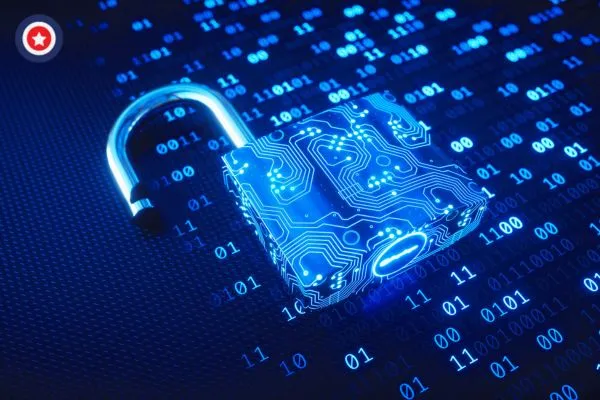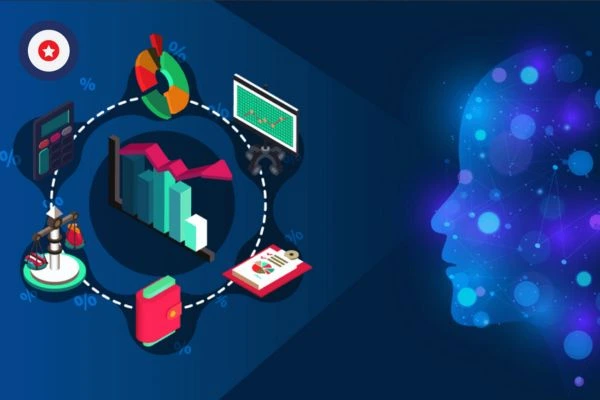
Role of AI in Modern Artificial Intelligence
5 October 2024
Media Bias and Its Impact on Public Perception in Political News
25 November 2024Looking to 2024, advancing technologies like cloud, AI and IoT will expand attack surfaces. Cybersecurity strategies must evolve accordingly through zero trust architectures, privacy compliance, authentication beyond passwords and skills development. Automation via AI will aid defenses while compliance with emerging global regulations becomes paramount. A proactive, multi-layered approach encompassing people, processes and technologies will help organizations secure their information as adoption of digital tools continues climbing
Rise of (AI) in Cybersecurity
With the rise of hyperconnectivity and further endpoints generating data each passing second, traditional rule- grounded security approaches are proving ineffective against designer dangers. This has pushed associations to influence AI’s capability to learn from massive datasets and descry unseen patterns to compound cybersecurity defenses. AI promises to automate routine security tasks, freeing up judges to concentrate on advanced- value work.
Anthropic’s Research on Benefits of AI in Cybersecurity
Anthropic, a AI safety launch, conducted exploration that showed AI can dissect petabytes of security data in real- time to descry pitfalls buried within and learn from each incident to strengthen protections. As the volume and complication of pitfalls increase, AI ways like tone- supervised and allied literacy will allow security systems to identify anomalies and unknown vulnerabilities that may be missed by humans alone. AI also improves security operations by continuously covering networks and endpoints to descry intrusions beforehand before damage occurs.This allows prompt response and containment of incidents through automation.
Growing Focus on Zero Trust Architecture
Zero trust is a growing security model that avoids placing implicit trust in network perimeter defenses or user endpoints. It assumes breaches are inevitable and requires rigorous verification of every user, device, application and transaction attempting entry. Instead of trusting users based on their location inside the network, zero trust verifies each access using techniques like device fingerprinting, behavioral analytics and inspecting traffic for anomalies.
Motivation for Shifting to Zero Trust
The traditional approach of putting trust in perimeter defenses like firewalls and VPNs has broken down with borderless computing on public clouds and mobile devices. Attackers render these ineffective by bypassing authentication or compromising endpoints to move laterally within networks. Zero trust helps isolate and validate each access request regardless of source to limit the blast radius of breaches when they do occur. Gartner predicts by 2023, 60% of enterprises will phase out legacy VPNs in favor of zero trust network access (ZTNA) solutions.
Adopting Zero Trust Gradually Across Hybrid Estates
Adopting a comprehensive zero trust model requires both cultural and technical changes. Most organizations will take a gradual, multi-year approach focused on key areas first – like restricting Cloud access or modernizing legacy VPNs with ZTNA. Manual processes will continue reducing risk until full automation catches up. Continuous monitoring based on zero trust principles helps identify gaps and prioritize resources as adoption scales. Zero trust ultimately makes networks more secure, agile and optimal for a cloud-driven future.
Increasing Adoption of Cloud Security Solutions
Rather than manage security internally, many organizations will look to cloud providers in 2024 that deliver security-as-a-service on a flexible subscription model. This alleviates on-premises hardware costs and staffing limitations while offering scalability and around-the-clock protection from global security teams. It also provides centralized visibility and control across scattered cloud infrastructure.
Enhancing Privacy Regulations
As data harvesting continues with little oversight, regulatory efforts will strengthen in 2024 to protect consumer privacy when personal information is collected and shared. Legislations like GDPR in Europe and emerging rules in the US, Australia and elsewhere aim to give citizens more visibility and control over their digital footprint. Compliance will become even more mandatory for organizations operating globally.
Emerging Threats and Security Solutions
With innovation comes new security challenges that 2024 will see organizations and solution providers tackle, some prominent emerging threats and mitigation approaches include:
Ransomware
- Adopt multi-pronged defense involving layered detection technologies, zero-trust access controls, user awareness training and offline/immutable backups. Practice regular data restoration drills.
Deepfakes
- Use AI-based digital fingerprinting and voice biometrics to verify authenticity of media content, particularly in sensitive enterprise communications and investigations.
Supply Chain Cyber Attacks
- Implement zero-trust network access for all vendors while observing least privilege. Monitor segments vendors access for anomalies. Audit code integrity during updates/patches.
IoT Security Failures
- Employ device identity and credential management, segmentation, policy-based enforcement and automated patching for all internet-facing operational technology assets.
Quantum Computing Risks
- Transition from symmetric ciphers vulnerable to Shor’s algorithm towards quantum-resistant algorithms like lattice-based and hash-based digital signatures for long term storage.
Data Exposure in Public Clouds
- Choose providers with strong security posture, enforce encryption everywhere, monitor for data leaks and misconfigurations while minimizing attack surface with just-in-time access.
Investing in Cybersecurity Training
Successful protection in 2024 and beyond depends on continually developing skills among existing security teams as much as recruiting new talent. Organizations must view training as a strategic investment that ensures employees at every level serve as the last line of defense against social engineering and human error. Key initiatives will include:
- Hands-on skills development for latest certifications relevant to each specialist role like cloud security, forensics, IR etc via online/classroom programs.
- Upskilling technical teams to operate modern tools for centralized logging, detection and response across multi-clouds.
- Broader security awareness modules and simulations tailored for non-technical staff about email, web, mobile safety best practices.
- Executive courses on risk governance, compliance requirements and ways to foster “security culture” company-wide.
- Tailored training roadmaps vs one-time workshops to impart continuous learning habits instrumental in defending evolving attack landscapes.
Conclusion
As technology adoption rises, cybersecurity strategies must evolve through 2024. Artificial intelligence, zero trust architectures, and cloud-delivered security will better protect networks and data on a massive scale. Key controls like multi-factor authentication and privacy compliance will tighten, while skills development remains important. Emerging threats require continued innovation from organizations and vendors. With a proactive, multi-layered approach, enterprises can successfully navigate future security challenges.
Faqs
Q: How important will AI be for cybersecurity?
A: AI will play a key role by auto-remediating known issues, identifying anomalies to detect zero-days and optimizing security operations through automation. Concerns around bias, transparency and oversight must be addressed as adoption increases.
Q: What authentication methods will grow by 2024?
A: MFA embracing factors beyond passwords like one-time codes, security keys and biometrics. As options mature, MFA will transition from optional to expected standard practice.
Q: Why is shifting to zero trust important?
A: Traditional perimeter security no longer applies in today’s hybrid, cloud IT environment. Zero trust continuously verifies all access regardless of source, limiting lateral movement if compromised while enabling cloud-centric workstyles. Gartner forecasts 60% of legacy VPNs will be replaced by 2023.




